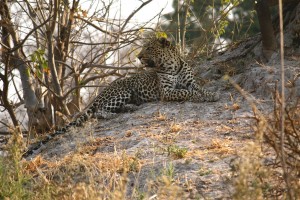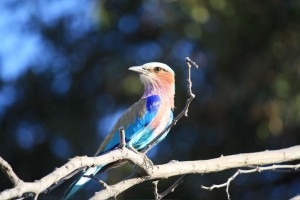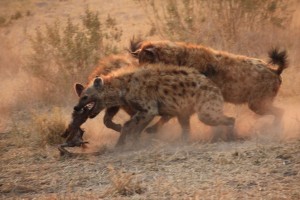Karibu! The first of many sweet-sounding Swahili words welcomed me at the Jomo Kenyatta International Airport, Nairobi on March 27th, 2009.
I am not one to shy away from an adventure, so when my best friend, Neha, invited me to spend a holiday with her parents in Kenya, I jumped at the opportunity. And after months of planning and chalking out all the places to visit and a ‘not as painful as I expected’ Yellow fever vaccine, I was finally in Nairobi on the day of our Kannadiga New year, Ugadi. Nairobi is truly unique as it has a national park right at its doorstep. And with zebras grazing on either side of the road while driving to my friends place, I knew I was now in a land that was truly special.
Malayalis are to Dubai as Gujaratis are to Nairobi! The Indian population in Nairobi is quite staggering. My friend stays at an apartment complex which has only Indians living in it – I initially had a tough time believing that I was actually in a foreign country. And visiting the temple there on my first day, on account of it being Ugadi, only underscored this feeling.
But I was about to get my African experience after all. The first place I visited was a road literally in the middle of nowhere about 2 hours from the city. ‘The anti-gravity point’ on the Kitulini Hill is a place of much speculation, as it is one of the few places in the world where a car that is switched off can roll uphill, unaided! Experiments carried out with water produced the same results as well water flowed uphill instead of down!
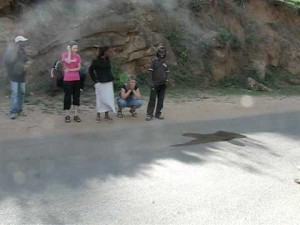
Water running uphill on Kitulini Hill
The weekend that followed took me on a drive through what is believed to be one of the natural wonders of the world – The Great Rift Valley. The valley, created millions of years ago due to volcanic activity, stretches from Syria to Mozambique. It has breathtaking landscapes where jagged escarpments and volcanoes tower over ochre soil, grassy plains and soda lakes. Each landscape brought with it a different weather every 10 minutes, so it would be raining heavily for about 5 km and then sunny again! The many lakes in the valley can be viewed from afar and are usually covered with a pink carpet of Flamingoes. We camped for the day by one of the many lakes in the area, Lake Naivasha, where we enjoyed paneer and capsicum barbequed over an open fire. Another attraction in the lake were hippos, which I was told were the number one cause of human deaths in Africa.
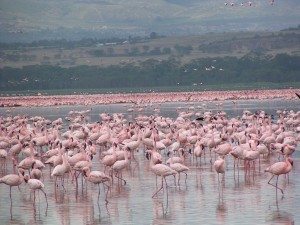
The next day, after enjoying the cold rainy weather in the valley, the true glory of the burning African sun hit us, as we headed towards the Northern hemisphere to Lake Bogoria. I caught glimpses of a side of Africa I had expected to see much earlier- children waving and flashing the widest smiles as we passed by and women carrying a can of water on their hips and a baby on their back. On this journey, we also got to cross the equator and literally be at two places at once-the northern and southern hemispheres. We reached Lake Bogoria when the afternoon sun was at its peak and were welcomed by thousands of flamingoes. Lake Bogoria is famed for its therapeutic sulfur-emitting hot water springs caused due to the volcanic activity underground. We enjoyed freshly cooked potatoes boiled in these very waters.
As much as the above mentioned places were fabulous, I was itching to see what I was here for in the first place. So when it was time for the weekend trip to Masai Mara for the safari, my excitement knew no bounds. Masai Mara, named after the local Masai tribe, is Africa’s greatest wildlife reserve and boasts of the highest lion density in the world. The 5 hour drive from Nairobi was fascinating as we got glimpses of the local Masai way of living- men in red robes grazing their cattle with hand made spears and heavily adorned women chatting outside their star-shaped Injajijik (houses) made of dried timber.
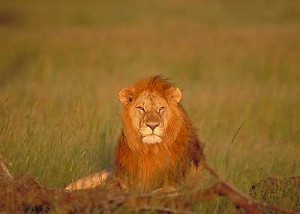 We stayed in a cozy jungle resort called Mara Simba Lodge, and headed for the game drive just as soon as we settled in. The guide took us in a ‘combi’, which is kind of like an Omni with an extendable roof, so that we can stand while we hunt for wildlife. The savanna seems like it stretches for infinity with tall acacia trees interspersed with dry grasses. Hundreds of deer of all kinds, zebras and wildebeest were a common sight. Tall elegant giraffes and majestic elephants, was a slightly rarer treat. But of course, what we wanted to a catch sight of was the “African big 5” – the lion, cheetah, leopard, rhino and the buffalo. After many false alarms, we were lucky to spot herds of buffalo, a leopard, and many prides of lions and even a hyena. And at last, after many a game drive, we left the Mara and headed back to Nairobi.
We stayed in a cozy jungle resort called Mara Simba Lodge, and headed for the game drive just as soon as we settled in. The guide took us in a ‘combi’, which is kind of like an Omni with an extendable roof, so that we can stand while we hunt for wildlife. The savanna seems like it stretches for infinity with tall acacia trees interspersed with dry grasses. Hundreds of deer of all kinds, zebras and wildebeest were a common sight. Tall elegant giraffes and majestic elephants, was a slightly rarer treat. But of course, what we wanted to a catch sight of was the “African big 5” – the lion, cheetah, leopard, rhino and the buffalo. After many false alarms, we were lucky to spot herds of buffalo, a leopard, and many prides of lions and even a hyena. And at last, after many a game drive, we left the Mara and headed back to Nairobi.
But the city of Nairobi is not without its own share of the safari life. Within the city limits is the Nairobi National Park, where only a fence separates the park’s wildlife from the metropolis. This was also where we caught sight of the elusive cheetah which we were unable to spot in the Mara. The national park also had a giraffe centre where we got to feed and pet the gentle giants. We also visited the Sheldrick Elephant Conservatory where orphaned elephants are cared for.
Our final place of visit was a trip to catch the snow-capped Mount Kenya located on the equator. Watching the sunrise over Mt. Kenya was one of the most spectacular sights I have ever seen. Overlooking Mt. Kenya is another private national park which harbors rescued chimpanzees, called Sweet Waters. In this park, we completed our quest for the “big 5” when we not just spotted but also were lucky enough to pet a semi-tamed rhino.
Finally after a shocking flight cancellation, I boarded the next available flight back home, tired and reluctant to leave. On my flight back I couldn’t help but reminisce. Kenya is not hi-tech with fancy cars and skyscrapers. People still live without electricity and make their own tools, and it’s also probably not the safest place either. But the warmth of the people there, the innocence in their eyes, their ‘hakuna matata’ or ‘no worry in Africa’ motto and the endless landscapes and the harmonious existence between the locals and the wildlife showed me that, simplicity can never be overrated. I hope to return to this magical land and still find the landscapes untarnished and people unchanged.
Pravarsha Prakash
Nov 2009
http://www.chillibreeze.com/articles/Kenya.asp
Average Rating: 5 out of 5 based on 246 user reviews.






